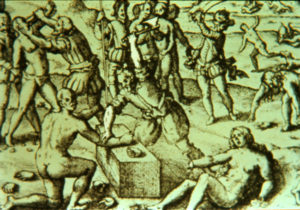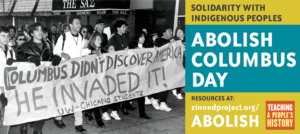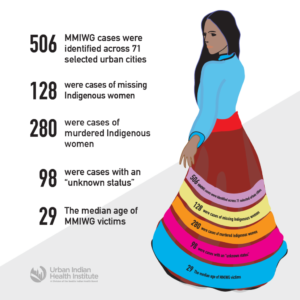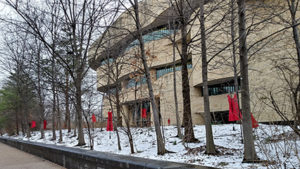On October 14 2019, Maine and Vermont will celebrate Indigenous Peoples’ Day instead of Columbus Day. This is a great step forward for indigenous people in New England and beyond. New England CONAM is recommending local churches in the entire conference and the New England Conference to stand together with this movement. As part of our Acts of Repentance, we can provide an example to those in our communities that we stand with those indigenous communities around our conference.
What we learned in school history books is only part of the story. Columbus initiated his transatlantic slave trade in 1494 when he send dozens of Taínos to Spain. Then in 1495, Columbus ordered some 1600 Taínos rounded up and 550 of them sent to Spain as slaves. From the beginning, Columbus was not on a mission to discover, but a mission to exploit and conquest. Taínos were forced into a tribute system and forced to find gold. If they failed, the Taínos were punished. This punishment took some ugly forms, from cutting off hands to being chased down by attack dogs. The wood cut below depicts a brutal scene of what the Taínos endured.

In the book The Conquest of Paradise, Kirkpatrick Sale depicts the scene where Columbus’s men encountered a group of Taínos in March 1495 in Hispaniola.
The soldiers mowed down dozens with point-blank volleys, loosed the dogs to rip open limbs and bellies, chased fleeing Indians into the bush to skewer them on sword and pike, and [according to Columbus’s biographer, his son Fernando] “with God’s aid soon gained a complete victory, killing many Indians and capturing others who were also killed.”
THE CONQUEST OF PARADISE
Too often, the Columbus story only depicts Columbus planting a flag on “San Salvador”, children learn the three ships names, but that is about it. The Taínos don’t have a voice in most history books that are in schools today.
How do we change the narrative? We start by educating those around us with the other side of the story. We have provided some resources below for those who would like to educate themselves or provide another voice at the table.
Resources
Books:
Rethinking Columbus: The Next 500 Years edited by Bill Bigelow
All the Real Indians Died Off And 20 Other Myths by Roxanne Dunbar-Ortiz
An Indigenous Peoples’ History of the United States by Roxanne Dunbar-Ortiz
Columbus: His Enterprise by Hans Koning
Christopher Columbus and the Conquest of Paradise by Kirkpatrick Sale
A People’s History of the United States by Howard Zinn


